Plastic Materials for CNC Machining
1. ABS (Acrylonitrile Butadiene Styrene, also called Cycogel or Absylux)
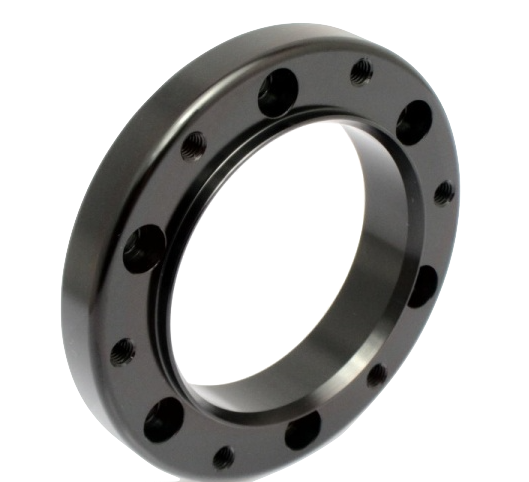
ABS is one of the most common thermoplastic materials with good mechanical properties, excellent impact strength, high heat resistance and good machinability.
ABS has a low density and is ideal for lightweight applications. CNC machined ABS parts are often used as prototypes before injection molding for mass production.
ABS can be easily milled from block into designed shape, with medium mechanical strength, ideal for quick design verfication, especiall for supporting frames, enclosures.
ABS also is well-known for it’s easy to get painted with different colors, or can be plated by regular electroplating process. No need to mentioned, if can be sand blasted to to get matte texture from fine to tough, and can also be polished to certain degree of glossy finish. Thus, if you are looking for design verfication of multiple color and texture, ABS is the one you should try.
The nature color of ABS usually comes in white or yellowish white, or so called rice yellowish.
ABS’s typical density: 1.00-1.05 g/cm3
2. Nylon (Polyamide, or PA, also called Perlon, Capron or Celanese)
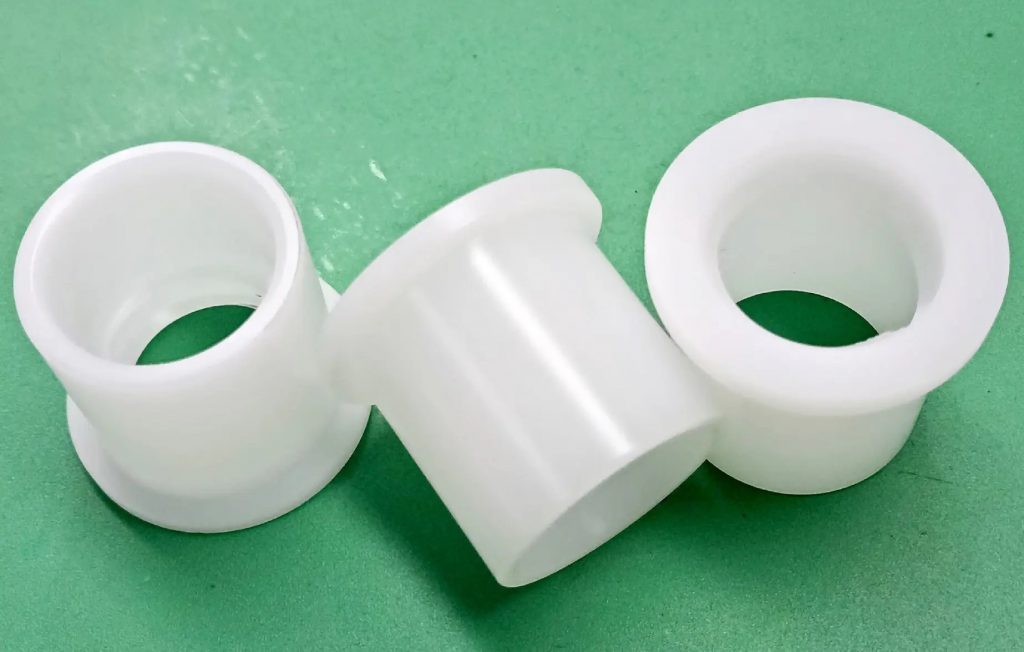
Nylon, also known as polyamide (PA), is a thermoplastic often used in engineering applications because of its excellent mechanical properties, good impact strength, and high chemical resistance and super low abrasion resistance.
But it absorbs water and moisture easily, so be careful is you use if for some dimension senstive parts, which is not suggested normally.
Another point I need to mention is that due to it’s low surface energy, its hard to get glued or bonded. So consider twice if you wish to glue Nylon parts.
Nevertheless, Nylon is an ideal option for the senarios where smooth and oily surface needed, especially 2 parts are often gliding against each other.
Among all Nylon models, Nylon 6 and Nylon 66 are the most commonly used in CNC machining, they are also easily avaialble commercial ones.
Nylon’s nature color is white. Though in the past, it’s hard to paint any other color other than the colors from the raw material supplier. Now we have developed unique process to dye or paint it into almost any color your design asks, the dyeing process will usually take an extra half to one day.
Nylon’s typical density: 1.14 g/cm3
3. Polycarbonate (Cyrolon, Lexan, Markrolon,Merlon, Tuffak or Zelux)
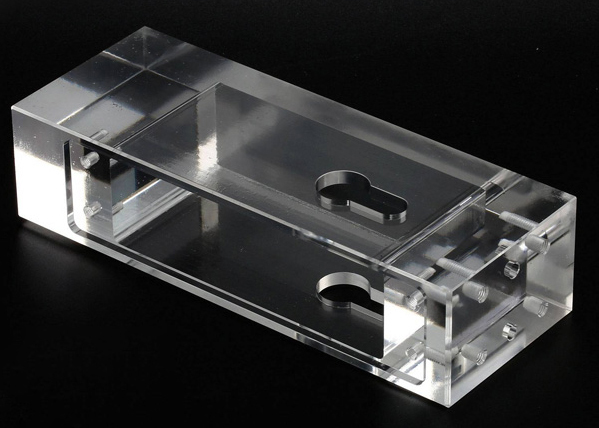
Polycarbonate is a thermoplastic with high toughness, good machinability and excellent impact strength (better than ABS). It can be tinted, but is usually optically clear, making it ideal for a wide range of applications, including fluidic devices or automotive lights.
Combined the excelent qualities of: Rigidity,and transparency. Polycarbonate is the perfect choice of parts which are required to be stable in dimensions; transparent or translucent for some special design intents. With certain after process effort, the Polycarbonate can be as clear as PMMA(Acrylic), yet it’s much stronger than PMMA, a few times of dropping onto floors, won’t damage it.
Polycarbonate (PC) also owns another good quality: heat resistance, it won’t deform under 120 celsius degrees. Though Polycarbonate is used as clear or semi-clear parts, but it can be painted to any other colors as you like. Due to it’s tranparency, the clear part can be glued with some UV sensitive glue, the glue itself is invisible, called “shadowless glue”—which create a kind of magic effect, one clear part is put on another part (clear or not),you won’t see any glue mark, yet they are firmly glued together.
Polycarbonate (PC)density: 1.20-1.22 g/cm3
4. POM (PolyOxyMethylene, Delrin, Acetal resin)
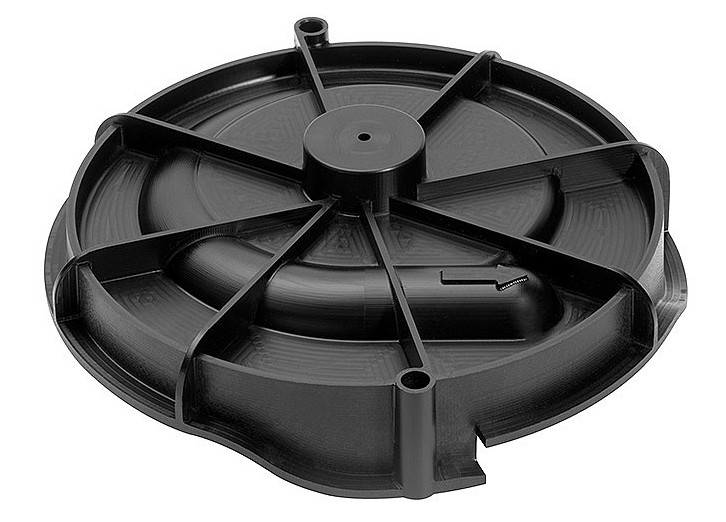
Commonly known by the trade name Delrin, POM is the engineering thermoplastic with the highest machinability of any plastic.
POM (Delrin) is generally the best choice when CNC machining plastic parts that require high precision, high stiffness, low friction, excellent high temperature dimensional stability and very low water absorption.
Thanks to the excellent comprehensive performance of POM(Delrin), it’s become more and more popular in the CNC machining parts. Many a times, you can use the CNC machined POM parts for final customer parts, mostly internal parts. BTW, so far POM material is not available for 3D printing, so if POM material attracts you for some reason, for prototype, the CNC machining is the first option. No need to mention, you can moulding it if you have decent volume like 1,000 or 10,000 depends on size of your part. We also provide you moulding service.
POM raw materials for CNC machining usually come in colors of: White, Black, Blue, Green, Red, Yellow. It’s hard to paint or dye it into other colors after CNC machining, so think twice if you want a customized color with the POM(Delrin) CNC machined parts. The POM (Delrin) material is also hard to be glued.
POM(Delrin) density: 1.40-1.42 g/cm3
5. PTFE (PolyTetraFluoroEthylene, Teflon, also called the king of plastic materials,)
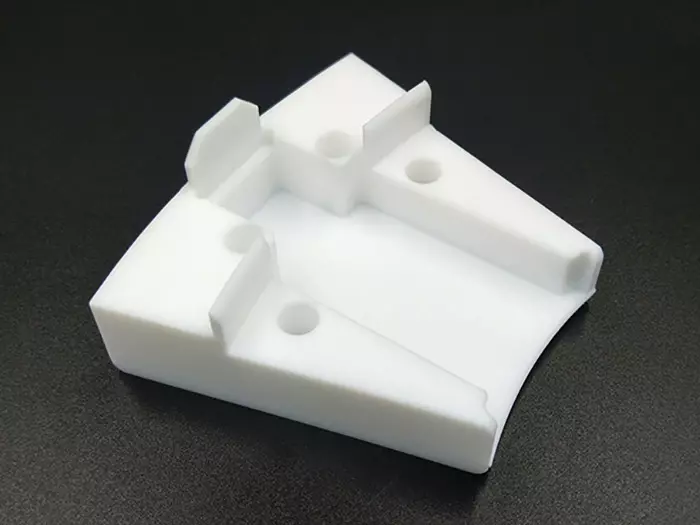
AN INCREDIBLY VERSATILE MATERIAL WITH A WIDE VARIETY OF APPLICATIONS
Polytetrafluoroethylene (PTFE) is a synthetic fluoropolymer of tetrafluoroethylene.
Being hydrophobic, non-wetting, high density and resistant to high temperatures, PTFE is an incredibly versatile material with a wide variety of applications, though it’s perhaps best-known for its non-stick properties.
The PTFE has a nickname of “the king of plastic materials”
Commonly referred to as Teflon, PTFE is an engineering thermoplastic with excellent chemical and thermal resistance and the lowest coefficient of friction of any known solid.
One of the few plastics that can withstand operating temperatures above 200°C, Teflon is an excellent electrical insulator. However, due to its softness, it is often used as a lining or insert in components.
Again, the PTFE be neither painted nor glued, so only mechanical connection should be considered when you design a PTFE part.
As mentioned above, in the situation where stain free or high temperature is required, you should try PTFE first, though sometimes it need to be supported or held by some other more rigid parts.
PTFE density: 2.2 g/cm3
6. HDPE
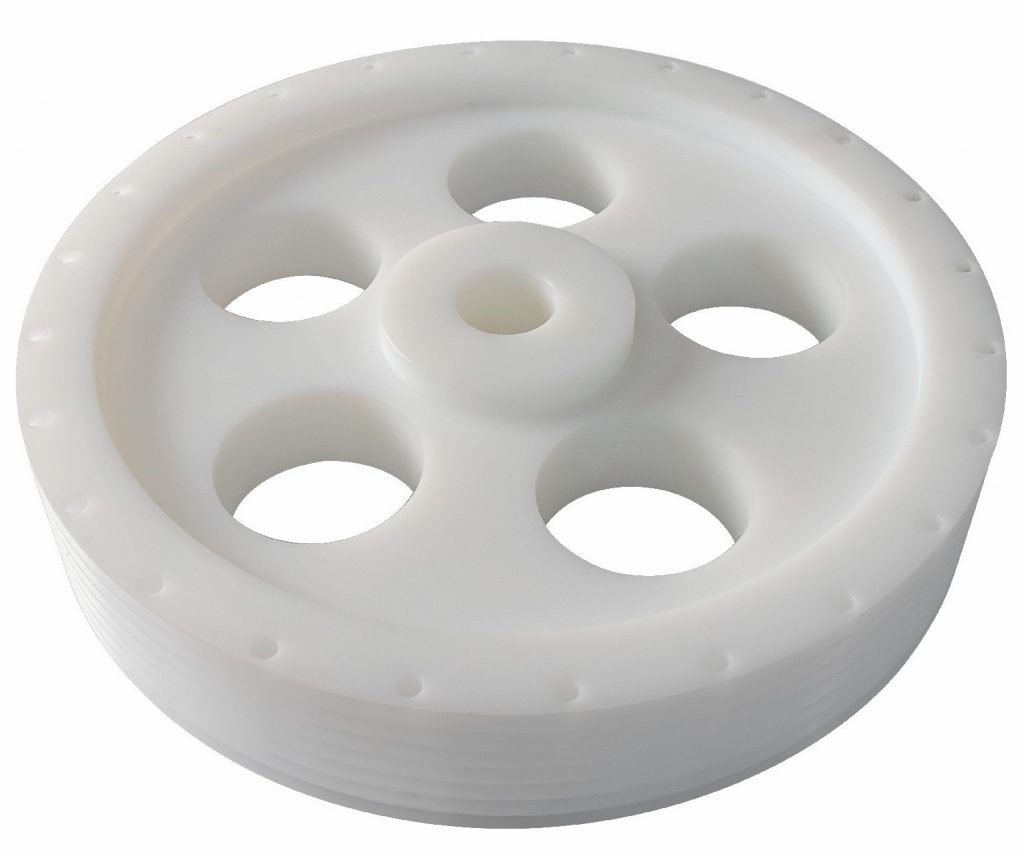
High-density polyethylene (HDPE) is a thermoplastic with a high strength-to-weight ratio, high impact strength and good weather resistance.
HDPE is a lightweight thermoplastic suitable for outdoor use and plumbing. Like ABS, it is often used to create prototypes prior to injection molding.
HDPEl density: 0.93-0.97 g/cm 3
7. PEEK
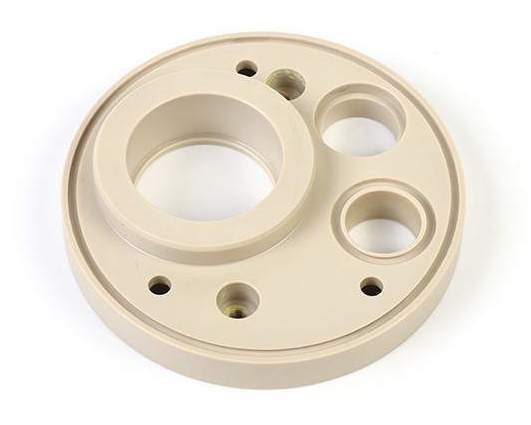
PEEK is a high-performance engineering thermoplastic with excellent mechanical properties, thermal stability over a very wide temperature range, and excellent resistance to most chemicals.
PEEK is often used to replace metal parts due to its high strength-to-weight ratio. Medical grades are also available, making PEEK suitable for biomedical applications as well.
ABS: The density is 1.2, the toughness is good, it can be bonded, and it can be baked to 70-80 degrees after oil injection
8. PMMA
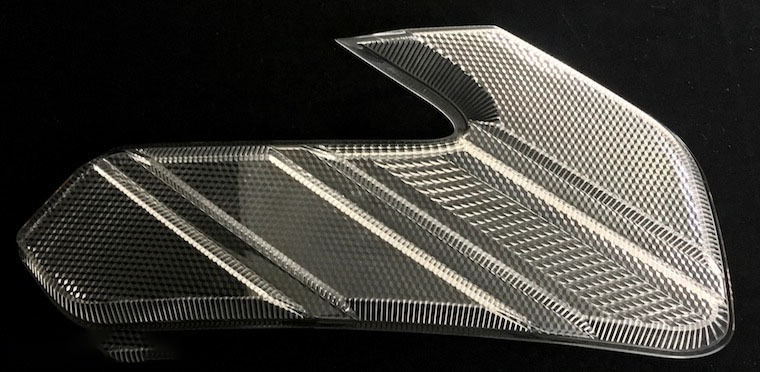
PMMA Density 1.3, relatively easily to get broken, good transparency, can be bonded, can be baked to about 65 degrees after spraying
9. Bakelite:
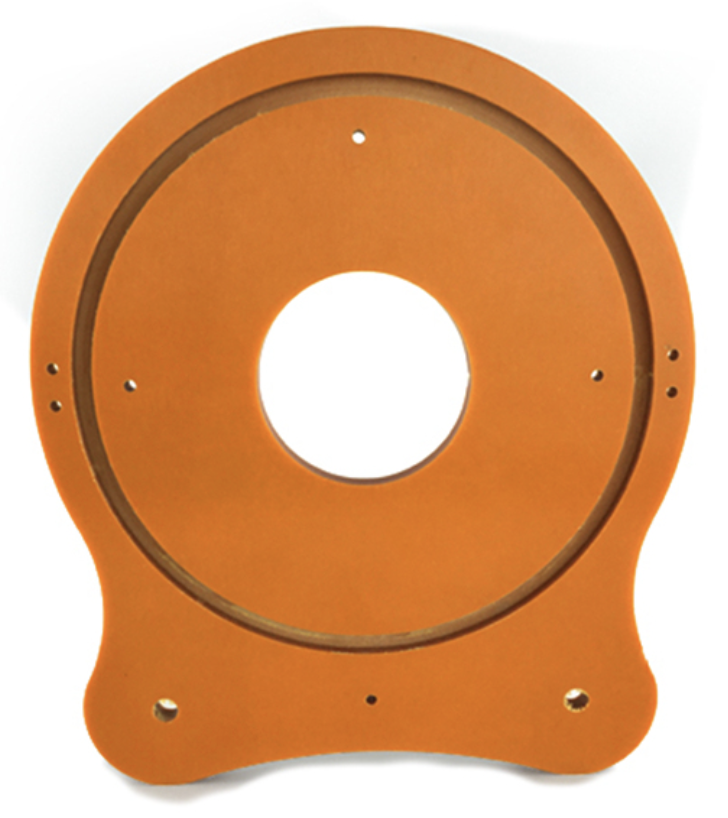
Density 2, high strength and toughness, can not be sprayed, can not be bonded, can withstand high temperature of 250 degrees
PP: Density 1.1, high strength and good toughness, can be sprayed with oil, can not be bonded
10. Nylon Glass-filled

